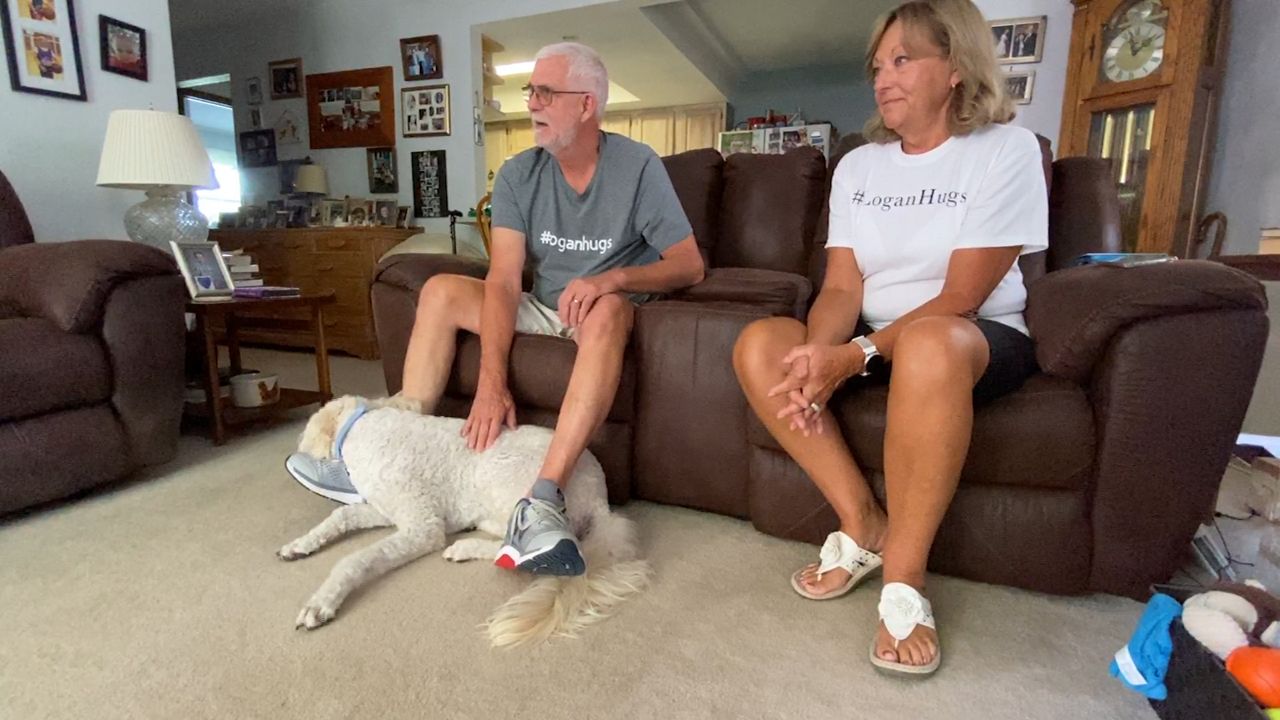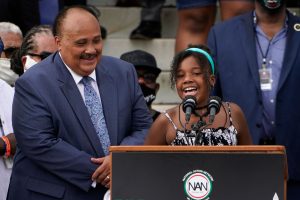WASHINGTON, D.C. — Political watchers across the country had their eyes trained on Ohio Tuesday night, as two special primary elections with the potential to rewrite national party narratives took place.
What You Need To Know
- Special primaries in OH-11 and OH-15 received national attention Tuesday night
- Establishment-backed candidate Shontel Brown bested Nina Turner in OH-11
- Trump-backed candidate Mike Carey beat out a crowded field in OH-15
- One political analyst said low turnout in both races could minimize their long-term impact
Could a more progressive challenger beat the establishment-backed candidate in a Democratic district steeped in tradition?
Would former President Donald Trump’s endorsement carry a Republican candidate across the finish line in a hotly contested primary after his chosen candidate in a recent Texas race lost?
The two House primary elections in Ohio drew the attention of national media and millions of dollars from outside political groups.
On Tuesday night, the answers were clear.
Democratic Party stalwart Shontel Brown beat progressive-backed Nina Turner by five points in OH-11, a majority-Black district that stretches from Cleveland to Akron. Brown’s more moderate pitch to govern incrementally like President Joe Biden resonated more than Turner’s promise to pursue progressive policy in the style of Vermont Senator Bernie Sanders, whose 2020 presidential campaign she co-chaired.
And in OH-15, a district that hugs the Columbus suburbs and pulls east to Athens County, Mike Carey beat a list of other qualified Republicans by double digits, earning 37% of the GOP vote. An endorsement from former President Donald Trump proved to be Carey’s not-so-secret weapon.
The longtime coal lobbyist has never held elected office, but he campaigned on continuing the Trump agenda and left several current state lawmakers, like State Senator Bob Peterson and State Representative Jeff LaRe, in the dust. It served as a win for both Carey and the former president, whose political power was being questioned after a candidate he backed in a Texas special election last week lost.
It’s worth pointing out, though, that both special primaries featured low voter turnout. Just over 75,000 votes were cast in the OH-11 Democratic primary, while just over 50,000 were cast in the OH-15 GOP primary.
“I think we don’t want to exaggerate its importance in terms of both the Ohio electorate and how it’s likely to behave in 2022,” Paul Beck, a professor emeritus of political science at The Ohio State University, said in an interview Wednesday.
Lots of political change is coming to Ohio in the coming months.
On Friday, the state’s redistricting commission will meet for the first time to begin the process of redrawing Ohio’s congressional district maps for the 2022 election cycle, which includes erasing one of Ohio’s 16 current districts. And a highly competitive U.S. Senate race to fill retiring Sen. Rob Portman’s seat is already underway, on top of former Trump aide Max Miller’s bid to oust OH-16 Republican Rep. Anthony Gonzalez for his impeachment vote.
This makes the long-term significance of Tuesday’s special primaries hard to gauge, according to Beck.
He does feel Brown’s victory in OH-11 proves that Democratic voters across the state usually prefer a more moderate approach to policymaking, which Beck said could help Ohio Congressman Tim Ryan, the lone Democrat competing in the Senate race with a ‘mainstream’ message.
Brown, a Cuyahoga County Council member and chair of the county Democratic Party, was mentored by Marcia Fudge, who resigned from Congress earlier this year to become Biden’s secretary of housing and urban development.
In the final weeks of the primary, institutionalist Black Democrats like South Carolina’s Jim Clyburn and Columbus’ Joyce Beatty traveled to the district to campaign for Brown as millions of dollars from outside political groups flooded in.
A split-screen formed as Turner’s campaign flew in progressive stars like Sanders and New York’s Alexandria Ocasio-Cortez to rally supporters, while the campaign relied on its large grassroots following to try to stay at pace with Brown.
“The significance of that outcome [Tuesday] is that it makes it more difficult for the, I’ll call them the ultra-progressive forces in the Democratic Party, to claim victory for their direction,” Beck said.
Because the 11th District is drawn to heavily favor Democrats, Brown is expected to cruise to victory in the November general election against Republican Laverne Gore, becoming just the fourth Black lawmaker to represent OH-11 in the last half-century.
Down in OH-15, Beck said Carey’s easy victory suggests that Trump is still influential in Ohio Republican circles, and potentially nationally.
Included in the list of Republicans Carey beat is State Rep. LaRe, who was endorsed by Steve Stivers, the popular former GOP congressman who represented the district for the last decade until he resigned in May to lead the Ohio Chamber of Commerce.
Carey is pledging to keep campaigning on the Trump agenda as he takes on Democratic State Rep. Allison Russo in November.
Beck said Russo could potentially go after Carey for his coal lobbying background and closeness to Trump, as she tries to win over suburban voters in the Republican-friendly district.
“Given the kinds of scandals that we’ve seen in Ohio in the last year or two, lobbyists are not in good favor,” Beck said.
Throughout the next year, it will become even clearer whether Tuesday’s races served as a snapshot of one political moment in the Buckeye State, or a preview of what’s to come.




